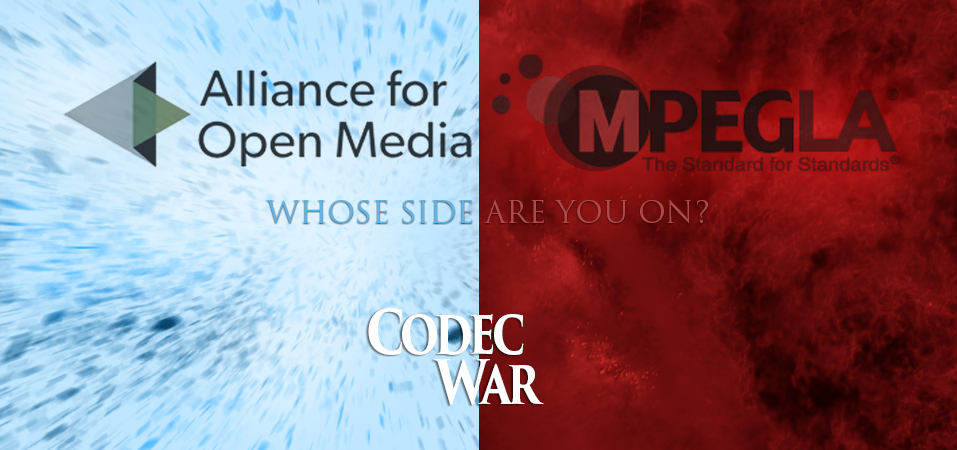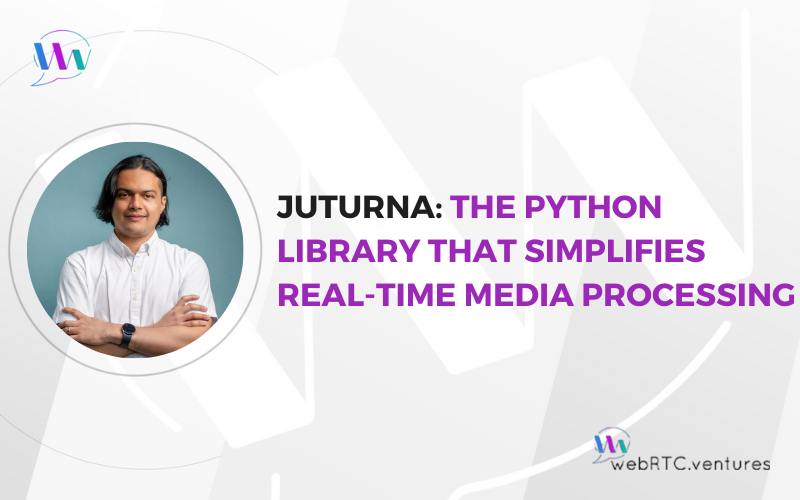September 1st marked what might be the beginning of the end for a licensing nightmare which has been hindering the real-time and media streaming industries alike for quite a while now.
Before we take a look at the announcement I’m alluding to here, let’s break down a few key concepts you need to know in order to correctly digest the magnitude of what this article is ultimately about, the Alliance for Open Media.
First off, let’s take a look at the current two major competitors for the “codec of the web” throne, H.265 and VP9.
How the MPEG-LA and H.265 came to be
Back in the early days when media streaming services such as Youtube were gaining traction, Apple and many other media-enabled device manufacturers carved out the path for the future of audiovisual content by adopting a single standard for hardware media compression meant for streaming distribution, H.261.
In addition to Apple, 25 other companies (including Microsoft, Panasonic, Sony, Dolby, Thomson, and Toshiba) combined several media compression and distribution patents to ultimately settle on the building blocks of the H.26X family of codecs.
This evolved in time to become the reason why you find MP4 (H.264) media files being produced by most hand-held devices, supported by streaming services, and even natively implemented in WebRTC.
The MPEG-LA firm, which to date still boasts about allegedly being “the standard of standards”, is in charge of enforcing and collecting licensing fees for all H.26X codecs, starting with H.261 and moving all the way up to the current H.265 (HEVC Advance).
To give you a sense of scale as to how much of a patent and licensing mind-bend the MPEG-LA is, Microsoft has around 75 patents in the pool managed at the firm, and Microsoft says it actually pays more in license fees than it collects in royalties.
The main thing you need to understand about H.26X codecs, that could ultimately affect your business, is that the standard is open but not free.
Open means that it was developed by a consortium of companies and anyone can make and sell an encoder or decoder. But it’s definitely not free, you’ve got to pay for a royalty fee to use it, and the rates are set by the MPEG-LA, which collects payments and distributes them to its members.
The fees set by the MPEG-LA are not to be taken lightly. If you are a content provider operating at Netflix scale with their margins and business model, the greedy %0.5 gross revenue licensing of HEVC Advance becomes debilitating.
Looking closely at the licensing agreement, you’ll find that the specification of who has to pay for what is worded quite losely.
But by scrutinizing how they operate you can safely simplify the licensing model like so: “The entity that sells the encoder and the entity that ultimately distributes the content created using the encoder, for profit, are the ones who have to pay.”
And in reality those are the two licensing options they sell.
Google and VP9, our knights in shining armor
The VP family of codecs was originally a proprietary and patented technology owned by On2 Technologies, yet in late 2001, On2 released their VP3 compression codec into the open-source community including their patents on the technology from which derived the Theora codec.
VP continued to evolve, under On2’s wing, to become faster and better at producing high-quality video at lower bitrates. Until, in 2010, two years after the release of VP8, Google acquired On2.
A month into acquisition, the Free Software Foundation issued an open letter to Google asking them to gradually replace the usage of Adobe Flash Player and H.264 on YouTube with a mixture of HTML5 and a freed VP8. In a not-so-surprising response from the company that at the time had the motto “don’t be evil”, Google announced in May 2010 that they would release the VP8 codec software under a BSD-like license and the VP8 bitstream format specification under an irrevocable free patent license.
Since then VP8 has extended to VP9 which is currently supported by Chrome, Firefox and even Microsoft Edge. Although it’s no wonder why Apple might be reluctant to allow their browsers to become part of this equation.
Aside from browser support Google has invested in creating ARM Cortex hardware devices (along with GPU tech giants such as nVidia) which decode VP9, to ensure scale and portability.
Alliance for Open Media – Finally an open source media standard for the web… maybe?
Currently if you wish to stream or do WebRTC communications and reach the broadest audience possible, you’ll need to use (and potentially pay for) H.264/H.265.
If reach comes to a close second to quality, and revenue by cutting-off licensing expenses, you should be able to get away with using VP9.
But either way, there seems to be quite a compromise, isn’t there?
Hence the potential for the Alliance for Open Media to become the definite tie-breaker.
As it stands, from their website launched and promoted since September 1st, we know who, what, but not how.
The who – The Alliance for Open Media is not just a random foundation conformed by some obscure entities advocating for openness in web media. If you take a look at their core members you’ll find a very promising list of tech giants supporting the initiative including:
- Cisco
- Mozilla
- Amazon
- Netflix
- Microsoft
- Intel
The what – Their “About Us” statement reads:
The Alliance’s initial focus is to deliver a next-generation video format that is:
• Interoperable and open;
• Optimized for the web;
• Scalable to any modern device at any bandwidth;
• Designed with a low computational footprint and optimized for hardware;
• Capable of consistent, highest-quality, real-time video delivery; and
• Flexible for both commercial and non-commercial content, including user-generated content.
Quite an ambitious set of goals! One might even be tempted to say that they are setting expectations a bit too high; but all-in-all taking into consideration the current members, especially Amazon and Netflix, both standing to gain a great deal from their media streaming offerings if this codec becomes a reality and is broadly supported, this might actually be a realistic assessment of what will probably make all other options obsolete upon its arrival.
The how – As I previously stated, there’s no info whatsoever on how they plan to bring this “next-generation video format” to life. With Google heading the list of alliance members, this might point to a re-branded VP10.
Although, again, Amazon and Netfilx involvement might garner some further surprises along the way.
As it stands the WebRTC codec war has been reignited in what might be one of the most consecuential mexican-standoffs of the information age.
May the bits be ever in our favor.











